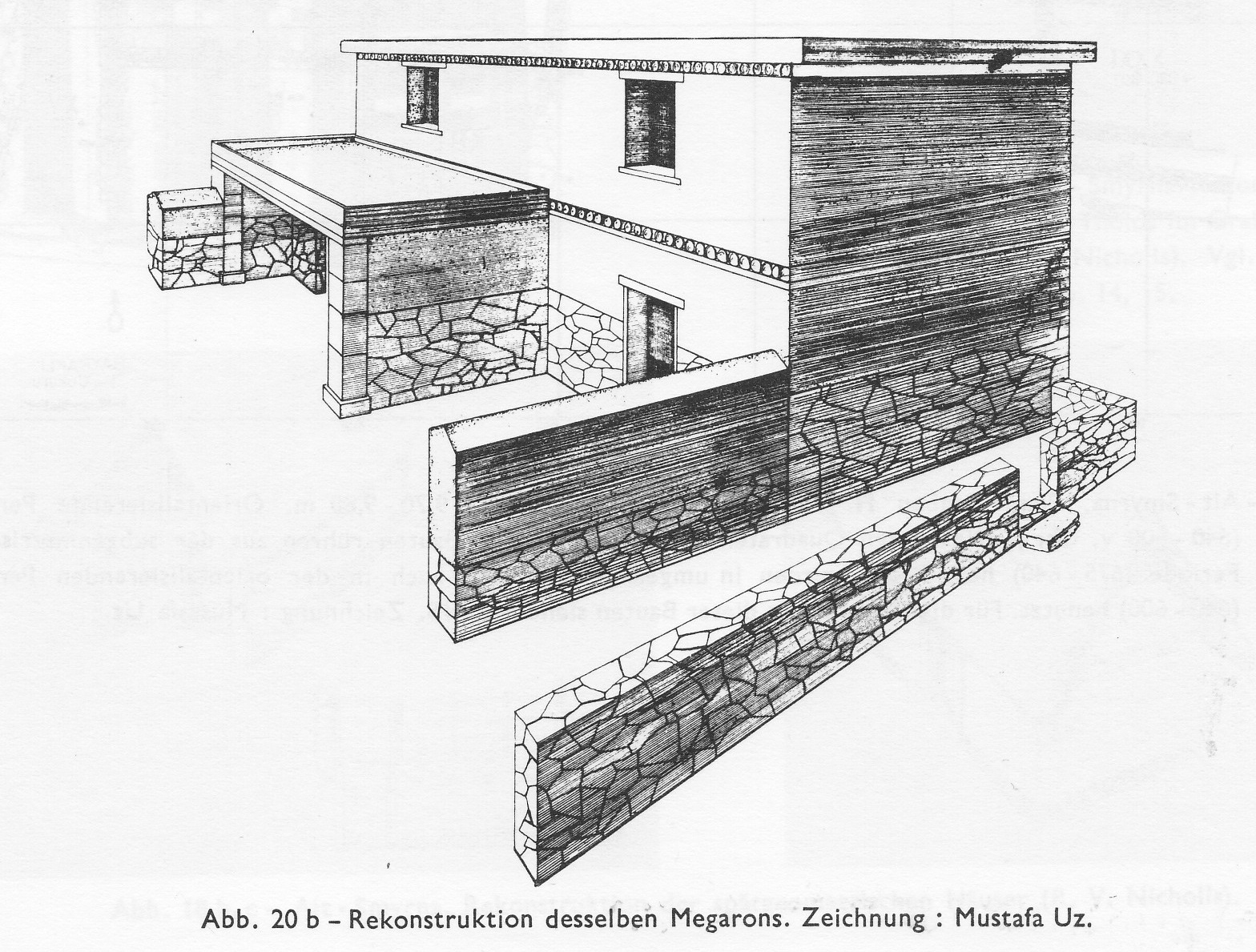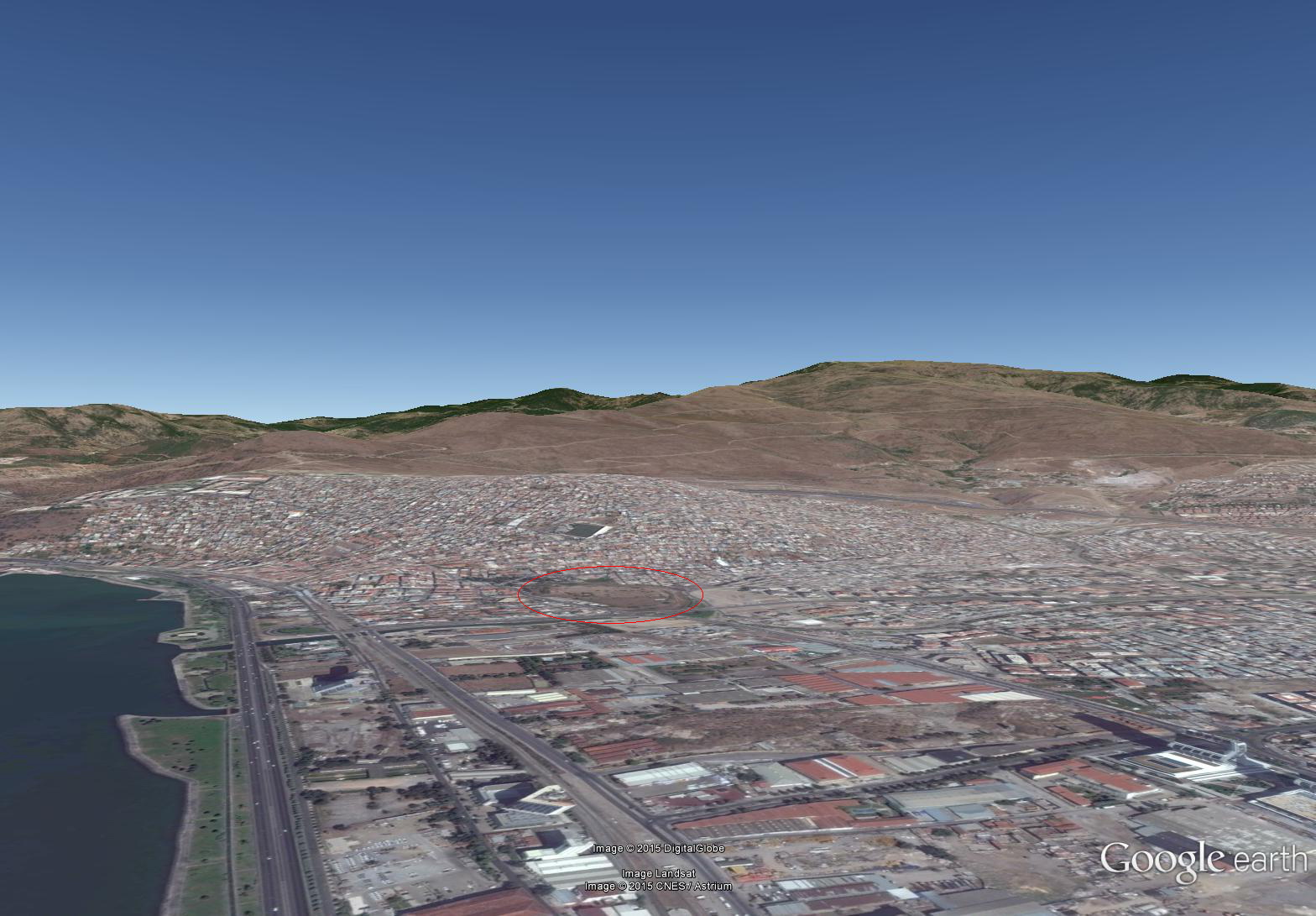

A contour map of the little promontory that Old Smyrna was built on. The flanks of Mount Sipylos start immediately outside the town. The dotted line is the modern coastline.
also:
The above quotes from: Archaeology and the Origins of Greek Culture: Notes on Recent Work in Asia Minor
Author: George M. A. Hanfmann
Source: The Antioch Review, Vol. 25, 1965


A contour map of the little promontory that Old Smyrna was built on. The flanks of Mount Sipylos start immediately outside the town. The dotted line is the modern coastline.
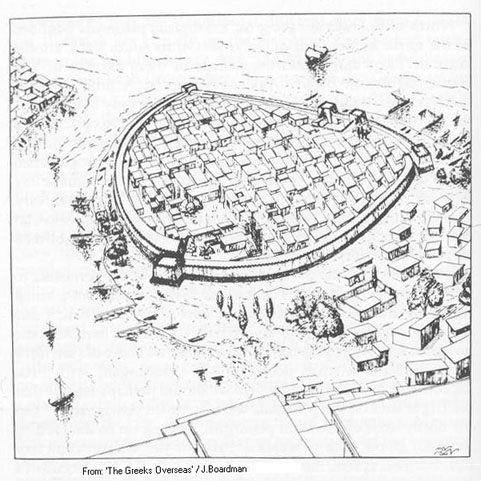
Old Smyrna by the end of the 7th century - probably later than Homer - when it was at its largest. In total some 500-600 houses (3000 people) may have stood here at that time. So it is a very small town with a very prominent wall. It would actually be seen as a military base rather than a simple town. The harbour on the left is the mouth of the Meles river. Note how the houses "fill the mouth of the shore between the two headlands" (Il 14.35-). Also note that Smyrna has two harbours, like the city of the Phaeacians in the Odyssey. The view is due South from the flanks of Mt. Sipylos.
Refs: "how the ships became a town", Il 14.30-6
Achaians look like "a large steep rock, close by the sea" Il 15.618-21
Achilles is like "a child of the grey sea, a steep rock..." Il 16.33-5
(coming towards Smyrna, by sea or on foot, the stone wall must have made it look like a rock.)

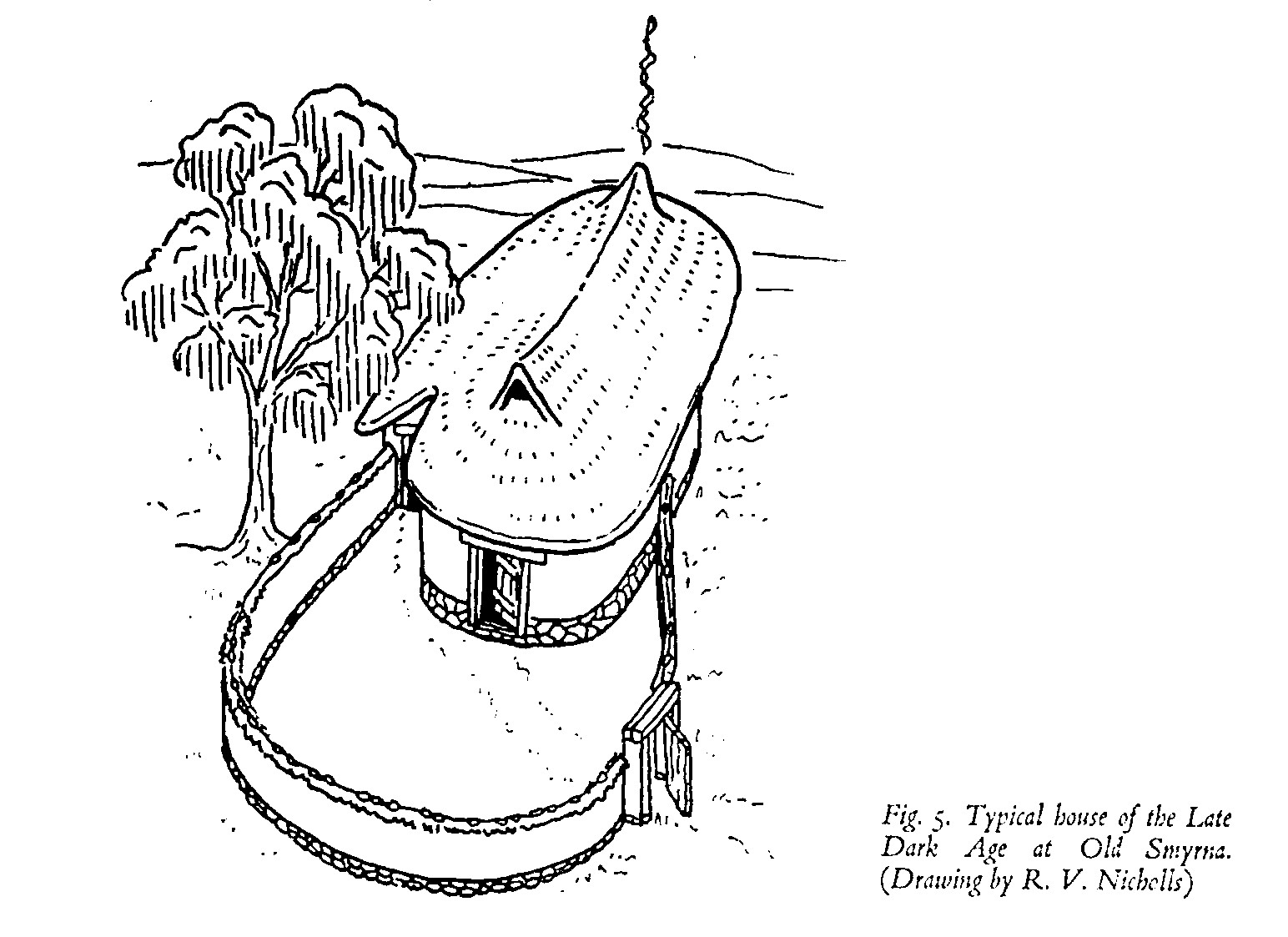
A thatched mudbrick hut like the one Achilles lived in (Il 24.448) and which supposedly replaced his ship. The oval shape is already old-fashioned in Homer's time, there was a trend toward building rectangular houses.
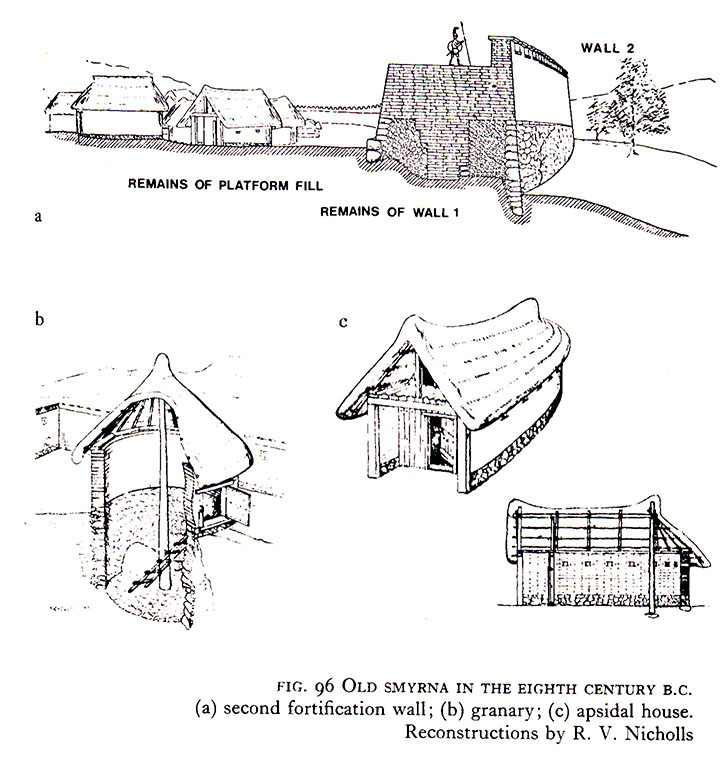
Smyrna's wall as it was rebuilt ca. 750 BC. Also a "tholos", a round building with a conical roof situated in the "aule" (open court) used for storage and for hanging servant-girls, as mentioned in Od 22.459-
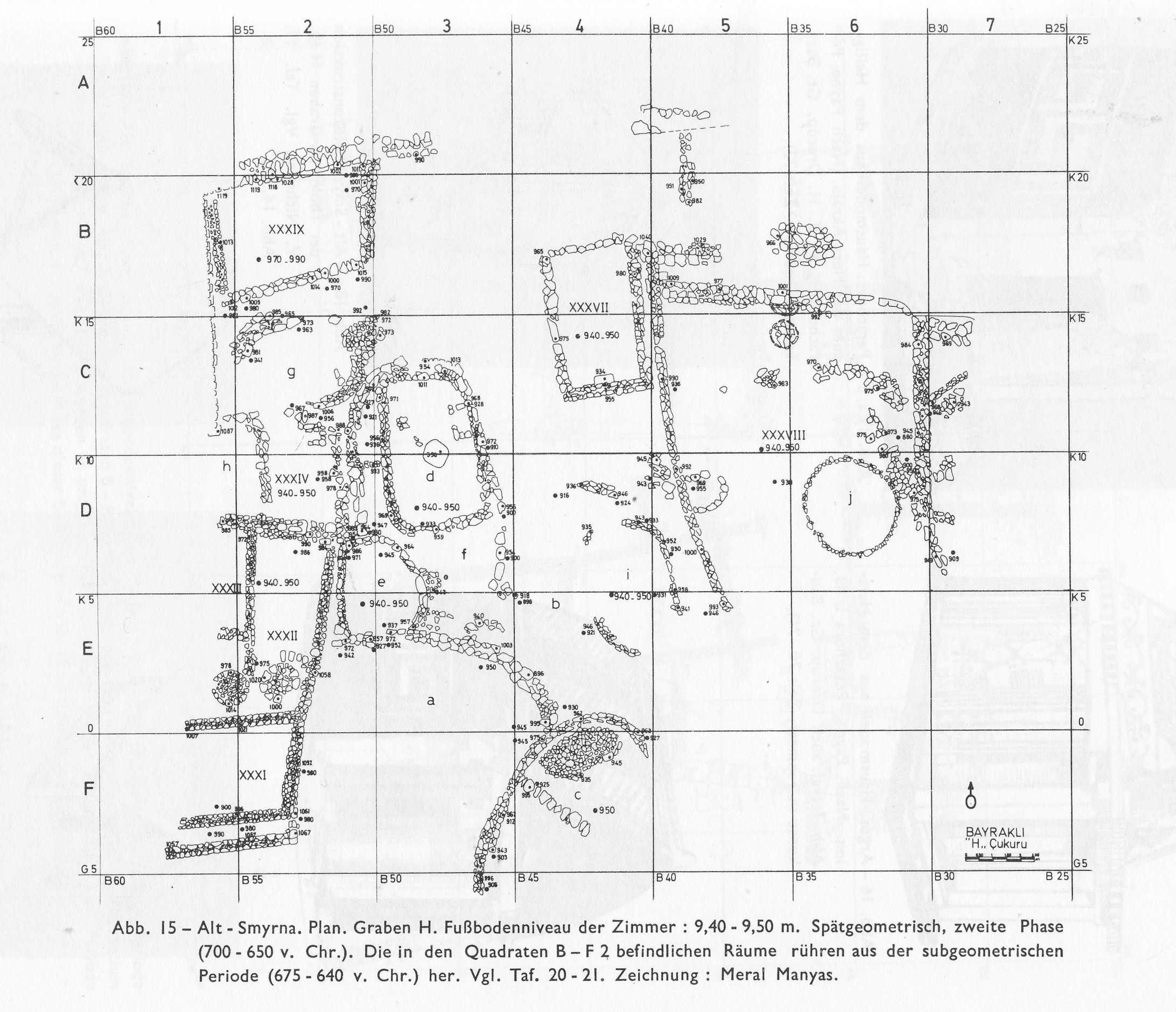
Archaeological remains of the "big house" in Smyrna. A cluster of huts round a courtyard, no doubt walled, where
in all
probability the "king" of the city must have lived with his family, servants and slaves.
It is impossible to date these relative to Homer's lifetime, but his life could very well
have spanned the situations between Abb. 15 and 19. I cannot judge how reliable Akurgal's dates are.
In 15 we have a cluster of round huts. Recognizable are building C: the big megaron, only partly visible,
which must have been the main building. Behind this, there is a cluster d, e and f which were connected
and formed the oldest multi-room building known from this area. At the left and top (not visible) there were
many buildings for diverse purposes, probably servants work- and sleeping huts.
On the right-hand side there is a large walled space (XXXVIII), larger than is visible here, with a
round building (j) in the middle: a tholos, see above. The walled space was not roofed over.
Akurgal estimates the size of this walled area more than 100 m2. It was too small to serve as an
agora but could have been used for gatherings such as the ones in Odysseus' house. It even had a small round
podium (± 1m.) on the west wall.
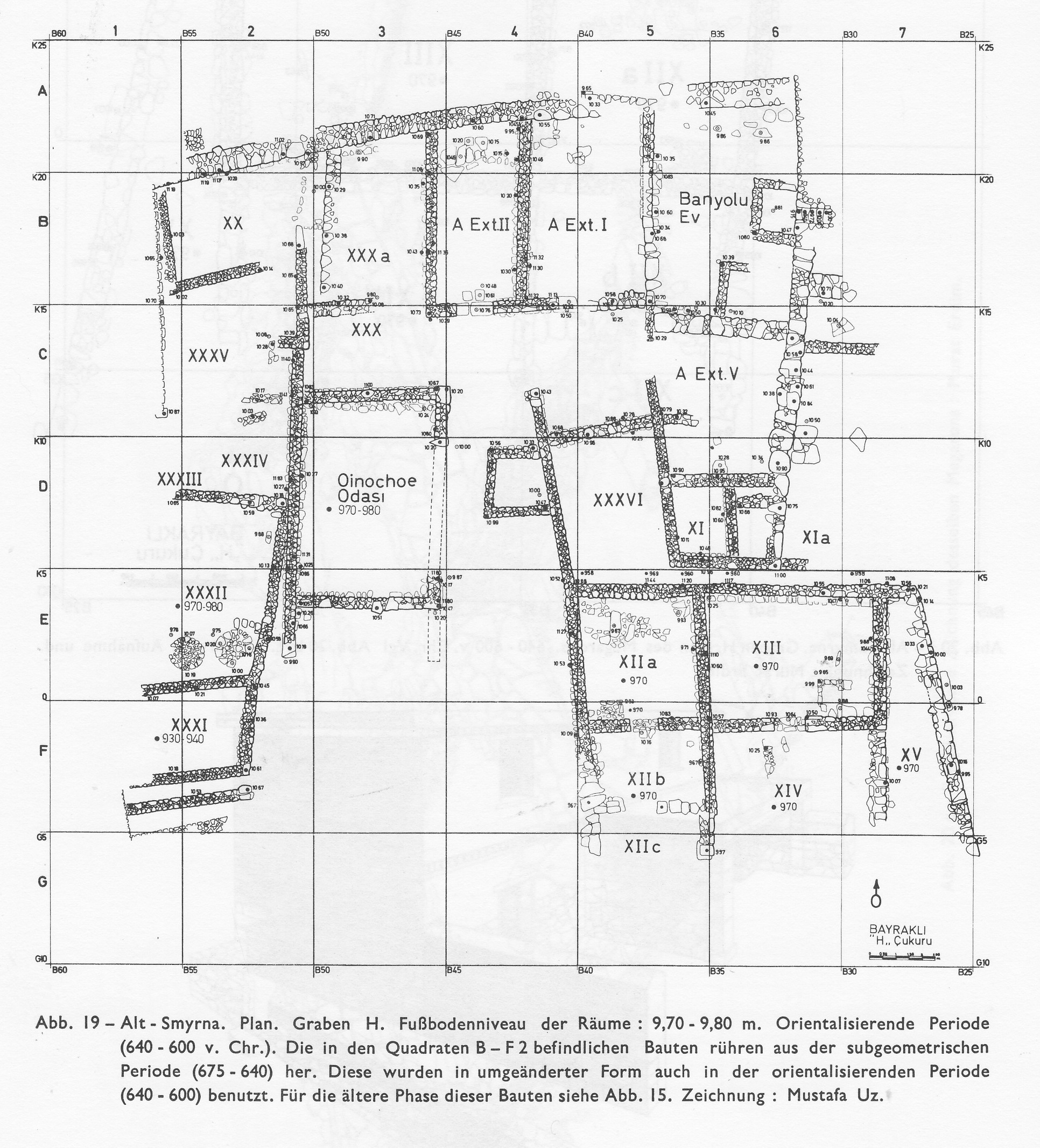
The same area a generation later. Now a modern megaron with an upper floor takes the place of megaron C.
